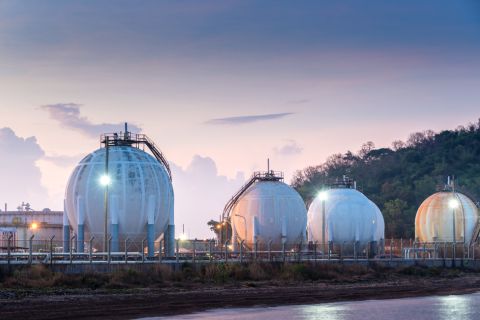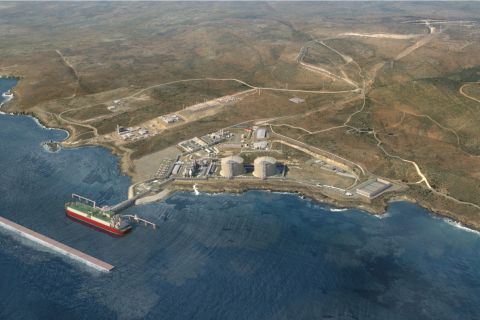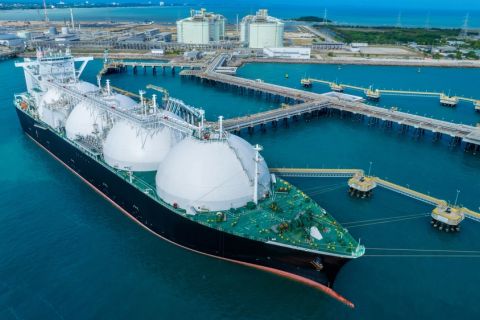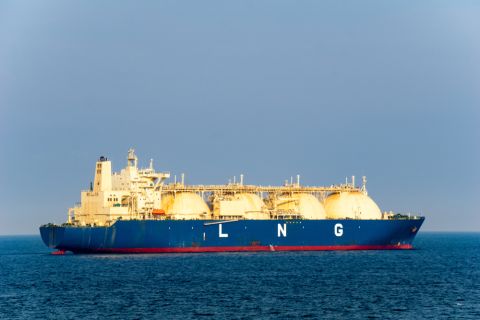The U.S. solar sector continues to heat up with a record-breaking federal lease auction this week, bringing in more than $105 million in high bids for solar energy development on four parcels in the Nevada desert.
The parcels are located in the Amargosa Desert in southern Nevada’s Nye County near the California border, where the winters are mild and the summers are hot and dry with abundant sunshine.
NV Energy Inc. was the provisional winner for two parcels—one 3,775-acre parcel and another 3,451-acre parcel—totaling more than $80 million in total high bids, according to the U.S. Bureau of Land Management (BLM). NextEra Resources subsidiary Boulevard Associates placed a high bid of $21 million for a 10,129-acre parcel. Leeward Renewable Energy subsidiary Silver Star Solar 1 placed the $2.3 million winning bid for a 6,320-acre parcel.
Together, the parcels could add nearly 3 gigawatts (GW) of renewable energy to the grid, the BLM said.
“This record-breaking auction for solar energy development is further evidence that the demand for clean energy has never been greater,” said Secretary Deb Haaland in a news release. “The technological advances, increased interest, cost effectiveness and tremendous economic potential make these projects a reliable path for diversifying our nation’s energy portfolio.”
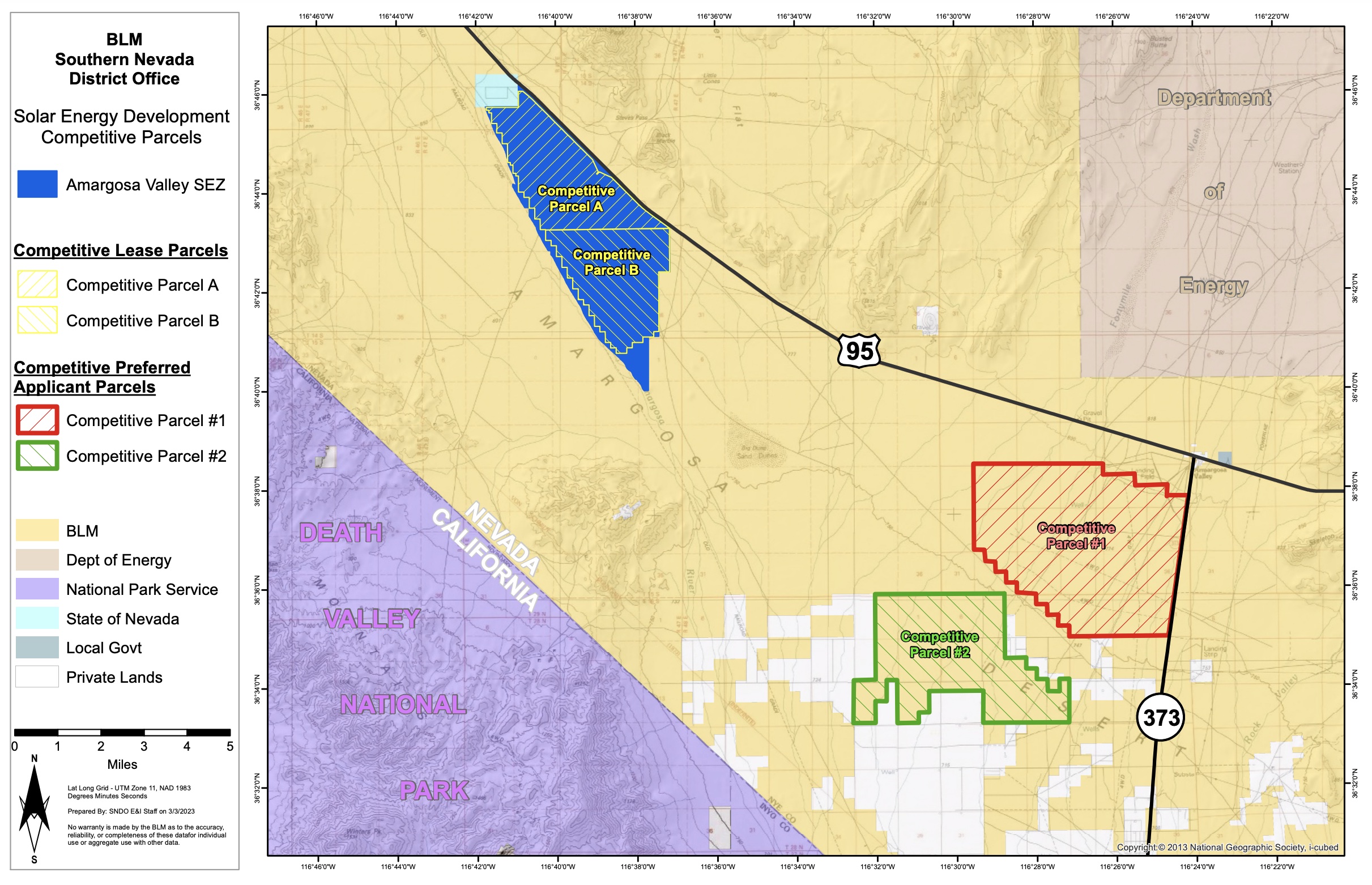
The companies are now required to submit right-of-way applications and plans of development for review by the BLM before further project development is approved.
More than 70 utility-scale clean energy projects—including solar, wind, geothermal and interconnected gen-tie lines—proposed on public land in the western U.S. are currently being processed by the BLM, the agency said. Combined, the projects could add more than 37,000 megawatts (MW) of renewable energy to the western electric grid.
Here is a look at other renewable energy news this week.
RELATED:
Renewable Dilemma: Daylight Savings, Expensive Nights
Enphase Ships IQ8 Microinverters to Customers in Germany
Kela Hydro-solar Plant Begins Power Generation
Small Solar Power Firms Eclipsed in India's Renewable Energy Race
Malaysia's Sarawak Plans 400MW Floating Solar Power by 2030
Osaka Gas, Summit Ridge Form JVs for US Solar, Energy Storage Projects
Kela Hydro-solar Plant Begins Power Generation
Noria Energy Launches 1.5-MW Solar Project in Colombia
Hydrogen
Aberdeen Hydrogen Hub Gets Green Light
The first phase of the hydrogen hub being jointly developed by BP and Aberdeen City Council has been approved by the local authority’s planning committee, the joint venture (JV) said June 28.
The JV company, Aberdeen Hydrogen Energy Ltd. (bpAHEL), said the Aberdeen Hydrogen Hub aims to deliver more than 800 kilograms (kg) of green hydrogen per day—enough to fuel 25 buses.
Hydrogen will be produced using electricity produced from a solar farm at a former landfill site
“We’re aiming to stimulate demand for hydrogen by working with fleets in and around the city and, through the wider Aberdeen Hydrogen Hub program, help the people and businesses of Aberdeen capture value through the energy transition,” bpAHEL CEO Oliver Taylor said in a news release.
The developers plan to start production in 2025, pending a final investment decision.
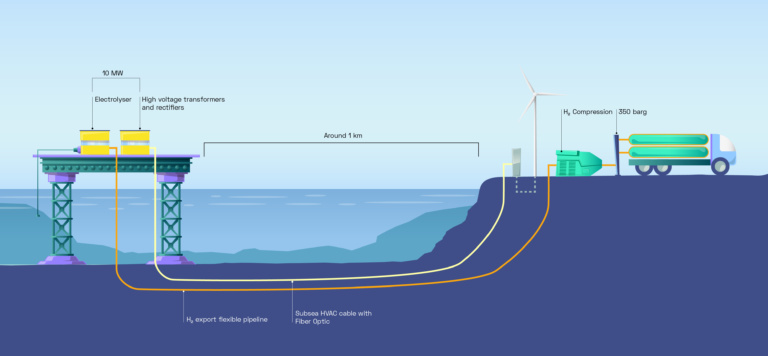
Lhyfe, Plug Power, Partners Land Grant for North Sea Hydrogen Project
A consortium led by hydrogen producer Lhyfe has landed a $21.8 million, five-year grant from the European Commission to build what could become the world’s first large-scale renewable hydrogen production plant offshore.
The project, involving nine companies, aims to demonstrate the technical and financial viability of large-scale hydrogen production in the North Sea. Hydrogen and fuel cell producer Plug Power, which is part of the consortium, said June 27 it will design and deliver a 10-MW proton exchange membrane electrolyzer system for the project.
“Once successfully demonstrated, we anticipate private sector investments in offshore hydrogen production will accelerate,” Plug CEO Andy Marsh said in a news release.
Called Hydrogen Offshore Production Europe (HOPE), the project aims to produce up to 4 tons per day of green hydrogen in a testing zone off the Belgium coast. Production will rely on electricity supplied by power purchase agreements, with North Sea water being pumped, desalinated and purified for electrolysis use. Hydrogen will be transported via composite pipeline for delivery onshore in Belgium, northern France and southern Netherlands, according to the release.
“HOPE is the first offshore project of this size in the world to begin actual implementation, with the production unit and export and distribution infrastructure due to come on stream in mid-2026,” said Lhyfe, which is coordinating the project and handling engineering, equipment procurement, production optimization and the export and distribution system.
Grants funds will be used for the project’s design phases, equipment, construction work and R&D focused on technology and infrastructure optimization, Lhyfe said.
Working with Plug Power, Lhyfe in 2022 pioneered the proof-of-concept for Sealhyfe, the world’s first floating offshore production. Powered by a 1-MW electrolyzer on a floating platform, the site off France has a capacity to produce up to 400 kg of hydrogen per day.
Sinopec’s First Green Hydrogen Plant Starts Production in Xinjiang
(Reuters)China’s Sinopec has begun producing green hydrogen at a plant in the western region of Xinjiang, the company said June 30.
Sinopec’s first green hydrogen facility has the capacity to produce 20,000 metric tons a year of hydrogen, using solar power to electrolyze water, the company said in a statement.
The plant, in Kuqa city in Xinjiang, is China’s first solar green hydrogen facility with an annual capacity of more than 10,000 metric tons (mt), the company said. That would make it the largest green hydrogen facility operating in the country.
China’s state planner last year announced a target to produce 100,000 mt/year to 200,000 mt/year of green hydrogen by 2025. Sinopec’s facility, along with its production capacity, has hydrogen storage capacity of 210,000 cubic meters (cm) and transmission capacity of 28,000 cm/hour, the company said.
Hydrogen produced at the facility will be supplied to Sinopec's Tahe refinery to replace hydrogen produced from natural gas. Sinopec began construction of the plant in November 2021, with an initial investment of about 3 billion yuan (US $414 million).
In February, the company launched construction of a 30,000-mt green hydrogen demonstration project in Inner Mongolia and announced plans to build a 400-km pipeline from Inner Mongolia to the capital, Beijing, to transport hydrogen.
RELATED:
Hydrogen's Biggest Hurdles: Customers and Demand
Exxon Mobil: Market Will Determine Hydrogen’s Path
RNG
EverGen’s RNG Facility Expansion Wins Funding
EverGen Infrastructure Corp. has received CA$10.5 million (US$7.9 million) in funding from Natural Resources Canada’s Clean Fuels Fund, the company announced in a June 28 press release.
The award will support EverGen’s renewable natural gas (RNG) expansion at the Pacific Coast Renewables (PCR) facility. The expansion will allow the PCR facility to use anaerobic digestion to create biogas, which will then be upgraded to RNG. The RNG can then be entered into FortisBC’s gas network under a preexisting 20-year offtake agreement, according to the release.
EverGen anticipates the PCR expansion will produce approximately 185,000 gigajoules, which equates to approximately 5,139 kilowatt-hours (kWh). The facility will also be equipped to produce liquid digestate fertilizer.
EverGen is an RNG infrastructure platform based on the west coast of Canada.
Wind
BP, Equinor’s Beacon Wind Project Enters Environmental Review Phase
The U.S. Bureau of Ocean Energy Management (BOEM) is seeking public comment as part of the environmental review of BP and Equinor’s proposed 2,430-MW Beacon Wind project offshore Massachusetts.
The development, which includes the Beacon Wind 1 and Beacon Wind 2 facilities, could power more than 850,000 homes each year. Plans include installing up to 155 turbines, two offshore substation platforms and two offshore export cables, which are planned to make landfall in Astoria, New York and Waterford, Connecticut, BOEM said in a news release.
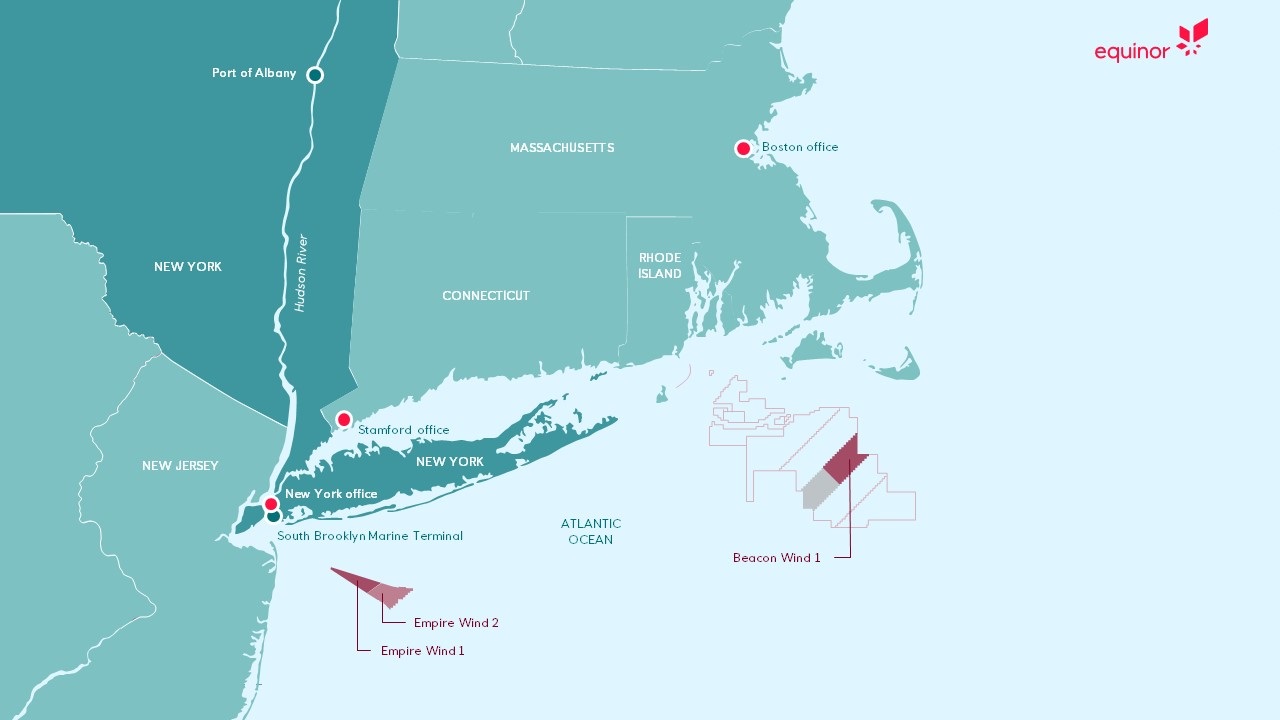
The 30-day public comment period began June 30. Comments gathered will be used to help BOEM identify issues and alternatives to consider in the Beacon Wind Draft Environmental Impact Statement.
The environmental review comes as the U.S. works to deploy 30 GW of offshore wind energy capacity by 2030. The Beacon Wind COP marks the 11th such review undertaken by the Biden-Harris administration.
EnBW, BP Taps Kent for Morgan, Mona Offshore Wind FEED Work
Bluewater-backed Kent said June 29 it has landed the FEED contract for the Morgan and Mona wind farms being developed by BP and EnBW in the Irish Sea.
The shallow-water wind farms, which cover some 800 sq km, are expected to generate enough electricity to power the equivalent of about 3.4 million homes, Kent said in a news release.
As part of the contract, Kent will carry out engineering design work that will inform foundation selection among other work. The contract includes an option for an extension to the detailed design of wind turbine generator foundations for the wind farms.
The company said it expects the FEED to last six months.
RELATED:
European Wind Developers Play Down Siemens Gamesa Turbine Troubles
Hart Energy Staff and Reuters contributed to this report.
Recommended Reading
White House Open to Ending LNG Export Pause in Push for Ukraine Aid, Sources Say
2024-04-02 - Reversing the pause could be tolerable to the White House in order to advance Ukraine aid, in part because the pause has no bearing on near-term LNG exports, the White House sources said.
US Expected to Supply 30% of LNG Demand by 2030
2024-02-23 - Shell expects the U.S. to meet around 30% of total global LNG demand by 2030, although reliance on four key basins could create midstream constraints, the energy giant revealed in its “Shell LNG Outlook 2024.”
Permian Gas Finds Another Way to Asia
2024-04-30 - A crop of Mexican LNG facilities in development will connect U.S. producers to high-demand markets while avoiding the Panama Canal.
CERAWeek: JERA CEO Touts Importance of US LNG Supply
2024-03-22 - JERA Co. Global CEO Yukio Kani said during CERAWeek by S&P Global that it was important to have a portfolio of diversified LNG supply sources, especially from the U.S.
Silver Linings in Biden’s LNG Policy
2024-03-12 - In the near term, the pause on new non-FTA approvals could lift some pressure of an already strained supply chain, lower both equipment and labor expenses and ease some cost inflation.


